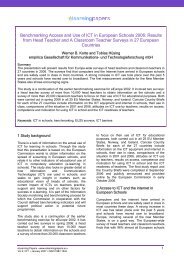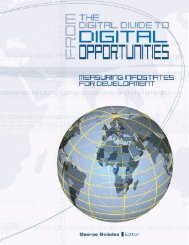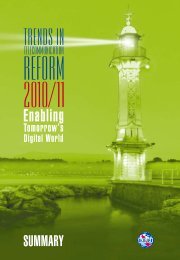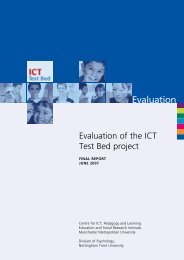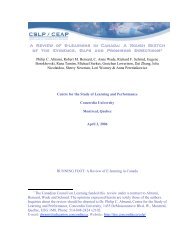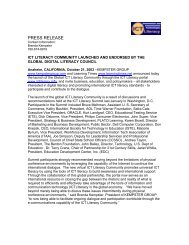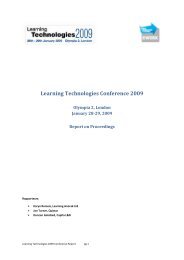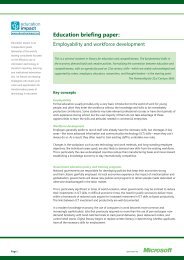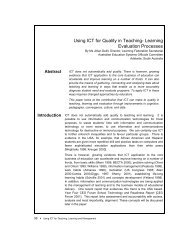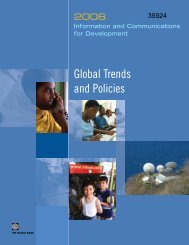147 pages pdf - ICT Digital Literacy
147 pages pdf - ICT Digital Literacy
147 pages pdf - ICT Digital Literacy
You also want an ePaper? Increase the reach of your titles
YUMPU automatically turns print PDFs into web optimized ePapers that Google loves.
Pedagogy & Webagogy -- Ready, Set … TRAIN and FACILITATE!<br />
#568: See You At 10:03<br />
Advertise sessions as 2:05 pm or 11:05 am. That five minutes gives people the opportunity to<br />
refresh before jumping into the next meeting.<br />
Kacy C. McDonough<br />
Bank One<br />
#569: Divide and Conquer<br />
Divide a group of learners into smaller groups, where each member posts reflections on<br />
common reading materials on set dates and the other members all respond to their fellow's<br />
reflections. The moderator can then later summarize the discussions for each theme. We found<br />
this to be a very stimulating way to discuss the texts and to add an external element of discipline<br />
to help the learners read and reflect regularly. Do note that it is very important to find the right<br />
size of group for the specific context.<br />
Hrobjartur Arnason<br />
Iceland University of Education<br />
#570: Show Them Where You Are<br />
Webcast participants frequently lose track of where they are in the overall presentation. I find it<br />
eases participants when they understand where they are on the session by providing a graphic<br />
representation (of some type) on each slide. Examples: listing the agenda along the left side of<br />
each slide with an arrow indicating where we were in the session or a gas gauge.<br />
John Schuster<br />
INNOVAguide LLC<br />
#571: Interact Early and Throughout<br />
Start early engaging the learners and keep the content and practice activities interactive so to<br />
keep the learner involved throughout the entire class. You can use practice activities, skill<br />
checks, quick polls, breakout rooms, etc.<br />
Lorraine Ligas<br />
#572: Link Class Activities<br />
Create in and out of class activities for a hybrid course (note I did not use the terms in class and<br />
online) as linked experiences where one could not be done without considering the other. For<br />
example, if the student is to do prep readings for an in class experience, then the instructions for<br />
doing the readings should indicate this purpose so the student is reading with a critical eye.<br />
Gail Allan<br />
Algonquin College<br />
#573: Dear Teacher<br />
To all instructors: Practice, practice, practice!<br />
Paula Cancro<br />
Independent Financial Marketing Group<br />
#574: Maintain That Connection<br />
When teaching online, individual feedback on a regular basis is important (say, once a week, if it is a 8-15<br />
week course). This feedback fits very well with the concept of formative learning assessment, as well as<br />
promotes the type of personal interaction desired by both facilitator and learner. Learners remark how the<br />
feedback (which contains examples of student success as a online learner, evidence of content learning,<br />
approaches for improvement and general encouragement) serves as their "connection" to the class and<br />
virtual classroom. Past research has shown that maintaining a "connection" is a key success factor to<br />
retention of online learning students.<br />
Kathleen Kelm<br />
Edgewood College<br />
701 e-Learning Tips by The MASIE Center www.masie.com 113



